NAVYPEDIA
 Support the project with paypal
Support the project with paypal
Ships
| Name | No | Yard No | Builder | Laid down | Launched | Comp | Fate |
|---|---|---|---|---|---|---|---|
| D1 | I71 | Vickers, Barrow | 5.1907 | 16.5.1908 | 9.1909 | sunk as target 23.10.1918 | |
| D2 | I72 | Vickers, Barrow | 7.1909 | 22.5.1910 | 3.1911 | sunk 25.11.1914 | |
| D3 | I73 | Vickers, Barrow | 3.1910 | 17.10.1910 | 8.1911 | sunk 15.3.1918 | |
| D4 | I74 | Vickers, Barrow | 2.1910 | 27.5.1911 | 11.1911 | sold 12.1921 | |
| D5 | I75 | Vickers, Barrow | 2.1910 | 28.8.1911 | 1.1912 | sunk 3.11.1914 | |
| D6 | I76 | Vickers, Barrow | 2.1910 | 23.10.1911 | 4.1912 | sunk 26.6.1918 | |
| D7 | I77 | Chatham DYd | 2.1910 | 14.1.1911 | 12.1911 | sold 12.1921 | |
| D8 | I78 | Chatham DYd | 2.1910 | 23.9.1911 | 3.1912 | sold 12.1921 |
Technical data
| Displacement standard, t | |
|---|---|
| Displacement normal, t | D1: 483 / 595 D2: 489 / 603 D3 - 8: 495 / 620 |
| Length, m | D1: 49.7 D2: 49.4 D3 - 8: 50.2 |
| Breadth, m | D1: 6.10 D2: 6.25 D3 - 8: 6.23 |
| Draught, m | D1: 3.18 D2: 3.29 D3 - 8: 3.48 |
| No of shafts | 2 |
| Machinery | 2 6-cyl Vickers diesels / 2 electric motors |
| Power, h. p. | 1200 / 550 |
| Max speed, kts | 14 / 9 |
| Fuel, t | diesel oil: 35 |
| Endurance, nm(kts) | 2500(10) / 45(5) |
| Armament | 3 - 450 TT (2 bow, 1 stern, 6) |
| Complement | 25 |
| Diving depth operational, m | 30 |
Project history
Approved 1906, and were the first British submarines with an overseas patrolling capability. Apart from the introduction of diesels most of the improvements stemmed from the big increase in displacement. More internal volume and a bigger crew lightened the work-load on a long patrol. The diesel engines also helped by eliminating the dangerous petrol vapour which had caused numerous explosions in the early boats. The adoption of saddle tanks increased internal space, while twin screws gave greater manoeuvrability. Earlier submarines had been fitted to receive radio messages but the 'D' class could transmit as well for the first time, an extendable mast being rigged by hand when needed. Although contemporary references suggest that the entire class were fitted with guns, and many with 2-12pdr, only D4 had one, on a platform which folded down into the casing. This arrangement was not a success, and later the gun was given a fixed position on deck. With their larger conning tower, and full-length casings the 'D' class marked a clean break with the tiny 'A's, 'B's and 'C's. D1 was authorised under 1906-07 Estimates, D2 under 1908-09 Estimates and remainder under 1909-10 Estimates.
Modernizations
None.
Naval service
D2 was sunk by German patrol boats off the Ems estuary 25.11.1914. D3 was sunk in error by a French airship in the Channel 15.3.1918. D5 was mined 3.11.1914 in the North Sea. D6 was torpedoed 26.6.1918 by German submarine UB73 off Northern Ireland.
 HOME
HOME FIGHTING SHIPS OF THE WORLD
FIGHTING SHIPS OF THE WORLD UNITED KINGDOM
UNITED KINGDOM SUBMARINES
SUBMARINES "D" submarines (D1) (8, 1909 - 1912)
"D" submarines (D1) (8, 1909 - 1912)
